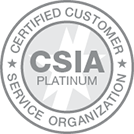Association content and publishing innovations driving next-gen readers
 “Print is dead!” was the battle cry of the aughts and beyond as digital media and free online content turned the publishing industry on its head.
“Print is dead!” was the battle cry of the aughts and beyond as digital media and free online content turned the publishing industry on its head.
But beyond the newsstand, an entire publishing ecosystem continued to thrive: niche publishing. While behemoths such as Gourmet and Time had to rethink their print format and strategy, smaller niche publications—including association publications—flourished, proving that focused content not only sells, it sustains.
Now, associations are facing a new age of digital challenges as members have more options than ever when it comes to digital content and less time in which to consume it. In an increasingly digital world, how do associations earn and keep their audience’s attention?
The Wall
Earlier in the Innovation Series, 2019 AH Leadership Forum presenter Michael Dominguez’s discussion about consumer-driven expectations pointed to a shift in association member behavior and a need for rethinking the membership models.
“The consumer world has trained a generation that there is no cost of entry,” Dominguez said. “How does that affect how your members and prospects think? It becomes, ‘I’ll pay for value, but I’m not going to pay to participate.’ This is a generational, behavioral shift.”
That behavior shift is informing how association members and prospects expect to access content from associations, as well.
“The first thing we have to start getting over as an industry is the concept of locking down all our content just for members,” said Sarah Black, MS, AH’s Director of Content and Creative and publishing strategist and advisor for AH’s client partners. “Prospects need to get to know your association, and that includes an exploration of what you have to offer. If all of your content is behind the wall and only accessible to members, how can you show convince prospects you’re worth their investment? A list of benefits on a website isn’t enough.”
Black challenges association leaders to get comfortable with releasing a sample of their content for nonmember access, but to do so strategically.
Increasingly, organizations are using data to design content and using it intelligently to not only meet their audience’s needs and interests but to drive action and results for the organization. “What we’re seeing more of coming out of some really savvy organizations is that they’re putting content out there, but doing it really strategically, and putting it to work for them,” said Black. That starts with leaders being willing to put some of their best content on display for the masses.
However, Black advises that there is such a thing as “too far” when it comes to sharing content. “The goal is to strike a balance to a point where you’ve given prospects a solid idea of who you are and what they can expect from your organization, but not so much that you’ve made it unnecessary to pay for that benefit,” she said.
An ideal scenario may be making the current and archived digital issues of an association publication restricted to members only, while the immediate past digital issue is open to the public.
Strategy-Infused Content
Associations that have decided to take the leap into developing strategic content are entering an exciting, fast-paced environment that changes by the day. If your association struggles with establishing a buttoned-up content strategy, you’re not alone. According to a 2019 industry benchmarking study, only half of association executives report having some kind of content strategy, while 47% report running with a one-size-fits-all approach. From print to web, email, social, and even push notifications, strategic content is responsive in all mediums. “Strategy transcends platform,” says Black. “If you’re being strategic, you’re factoring in the platform and delivering content on the most effective platform for that content. But that also means that you’re paying attention and adjusting to the changing behaviors and expectations across all those mediums.”
Black advises a few vital components of developing strategic content:
Keyword analysis: A keyword analysis tells you not only what keywords are effective for your organization, but what common and related keywords are searched for that might inform topics about which your association would develop content.
Platform-specific content strategy: Outlined by platform, audience, content verticals, and content mix, this becomes the daily reference document for anyone responsible for generating and posting content to any platform.
Readership/website analytics: Whether from a digital publication, website, enewsletter, or other platform, readership metrics provide critical insight into reader behavior and how content is performing, and is used to help inform decisions about future content development.
Data collection strategy: One of the key ways associations can put their content to work for them, requesting reader information, like an email address for future communication, is a particularly valuable tool and generally underutilized in the association space. “Associations are so protective of their member-only content that they don’t want to give it away at all, even if they get something in return, like contact information for membership marketing,” said Black. “However, associations are treasure troves of content, so this one is a really rich opportunity that many could implement pretty easily.”
Personalization: “This one’s a huge topic, but you can’t ignore it,” said Black. Customized content for different audiences—tailoring emails, articles, or other content for specific member segments, such as early-, mid-, and late-career members—is an absolute must. While some broader communications make sense, associations must recognize their different audience segments and develop content tailored to those segments. “This can be a herculean task, because it involves data collection, persona development, list segmentation,” said Black. “However, our research shows that more and more members actually want and expect this kind of personalized content, so associations should be prepared to make that effort.”
While there are other components, these form the foundation of strategic content that will help associations innovate their content game. “The most important thing is to keep your eyes and ears open to what’s coming next, what’s changing, because it’s changing constantly,” said Black. “But right now, these elements are the pillars of successful content from a data and performance perspective.”
Beyond Data
While numbers are exciting, there’s one softer metric that’s moving the needle in a big way: ethos. A recent study by Wiley found that younger demographics are more “ethically motivated” than more established colleagues and cited high ethical standards as most important to them when considering membership. Rounding out their top criteria: identifying with the ethos and mission of the society and greater transparency around the publishing process.
“We’re definitely seeing a bigger push in scientific and academic societies for increased ethics in publishing,” said Black. Societies with journals may want to address this topic head-on and publish a statement about what they do to uphold the integrity of the publishing process, but even those that don’t publish a peer-reviewed journal can speak to this priority.
“Recognizing that ethics and ethos is so important for those next-gen members, I think it’s time for associations to put the culture of the association out there,” said Black. This may come in the form of a culture statement, or, for those serious about establishing and cultivating a strong culture, a Culture Committee that can be shared online.
“Communicating something like ethos is really difficult to do in a series of articles; it needs to be done in a holistic way across all your platforms,” said Black. That kind of takeover might just pay off. “I think audiences are looking for bravery, they’re looking for organizations that are ready to go all in on culture and community.”
What’s Your Innovation?
From hard numbers to soft skills, associations have a wide range of options for their next content move. Learn more about content & publishing at AH.




